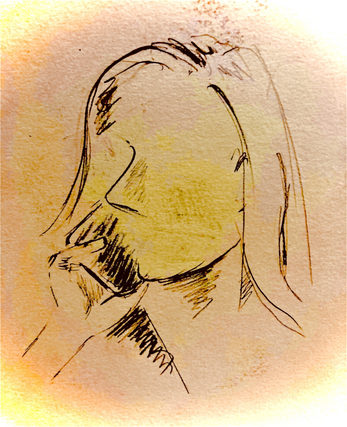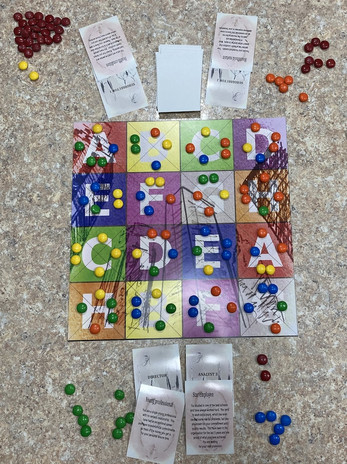
The Corporate Game
A downloadable game
Politics are present in every context, almost in every group of people and circumstances. Many times there is politics even in non-profit organizations or in families. They seem to be part of human nature, probably caused by our internal fears. Corporate politics have a negative connotation because they can lead into stressful situations and can be unpleasant. However, some people seem to enjoy them and move around politically very confidently, not necessarily harming others.
Political games are usually about politicians ruling countries or states. This is a game about politics in the workplace. There is no specific organization, it can be applied to many contexts. This will allow the audience to play with politics, or to treat politics like a game. The idea is that players can see politics from an outside perspective and are able to reflect on their own experiences. They will be able to understand which character they have been and what is the decision they have taken towards each situation. Also whether other characters have been affected positively or negatively by their actions. Anyone who has worked at an organization will be familiar with some of the situations. The challenge for the players is to decide between their own interest and collaboration, which will also drive some competition. This is not a deterministic game, as the dynamics and alliances will be directed by the decisions taken by the players. However, there is some chance involved in the situation, players’ life context and the decisions they are able to take on each turn.
In a normal setting we always say that collaboration is the most desirable option for everyone. However, things might not always turn out the best possible way. Thinking about all this will hopefully help anyone interested in the dynamics of working as an employee in an organization, to control their emotions in a real situation and therefore be able to keep their attitude and respect their values. In this game we want to have fun and see corporate politics as an opportunity to learn about human nature and develop empathy, rather than a survival painful mechanism.
GAME OBJECTIVE
The objective of the game is to earn points by building projects. One project is represented with a colored square on a board. Each square is made of a set of 4 triangles, where players will place their contribution to the project. The whole team will have to contribute to the project by taking decisions on each turn. The point system helps to represent each player’s perceived progress in the game, and stimulates competition.
GAME MECHANICS
There are 4 different sets of cards (which can be downloaded from this page):
- The characters
- Life context for characters
- Situations that happen at the organization
- Decisions to be taken by players
Each player will also need different color tokens (about 25). Points can be tracked with other color tokens or in paper.
Each player will choose a character to play (card 1), and will get a life context (card 2) randomly at the beginning of the game. They can leave their card next to them. Everyone in the game will know the characters (who is who). Each player will decide if they want to disclose their life context or they want to keep it for themselves, as it might help to explain their decisions.
All decision cards (64) will be distributed among all players (ideally 4 players). Decision cards are not to be disclosed. In real life, our decisions are not infinite and information is asymmetrical, so people’s strategies or cards are not always known. Each decision card has a color square that will indicate the player to which projects he/she can contribute (the board and decision cards are also marked with a character, for color blinded).
All players will start with 0 points. Players will decide who will start the game. Situation cards are left in the middle. One player will draw a situation card and read it aloud. Based on the situation, the player will need to take a decision from his/her decision cards, therefore leave one decision card open in the table and explain to the group why this decision is being taken. Then the player can contribute to one of the 16 projects on the board that has the color of the decision card taken. This contribution is represented by placing a token in one of the triangles of the selected project and will give one point to the player. If this is a new project the player will place two tokens and will obtain 5 points instead of 1. The next player in the table will also use one decision card for the same situation and can contribute to projects. After all the players had their turn, another player in the table will draw the next situation.
Board with 2 tokens on all taken projects
The game will finish when all the projects have been completed or one of the players is left with no decision cards. The players can measure who obtained more points by the end of the game and they are to decide if there is a winner.
CHARACTERS
The game can be played by 2 or 4 players. There are 6 possible characters to choose from. Characters are not provided of gender, so they can be applied to anyone. The organizational chart is described below:
Sample character card
LIFE CONTEXT
Each character will have a life context assigned, so each person will need to take a card from a deck. Our personal life influences our behavior. We have different interests because we have different needs. Therefore, each character needs to have a context that can somehow explain their decisions.
Sample life context card
SITUATIONS
There will be a set of cards for 20 possible situations that happen in corporate life. Each player will need to make decisions based on the situation. Situations invite players to play politics and they need to contribute to projects as part of their job.
Sample situation card
DECISIONS
The decisions that the players can take will have consequences. Players will need to choose between their own interests or projects and others’ interests, and sometimes may feel tempted to betray someone or build alliances. This is how the game reinforces the idea of hidden rules in corporate dynamics.
Sample decision card
ADDITIONAL RULES
- On each turn, the group will decide if the decision the player has made is applicable to the situation and the player will be able to contribute to one of the projects on the board. If the group decides the decision is not applicable, the player will not be able to contribute to projects.
- In every turn, players must assume the situation is applicable to them in order to make the decision.
- Some decisions can cause players to lose turns. These are applicable to the next immediate turns from the player. Lost turns can accumulate.
- If the player who needs to read the situation has lost one turn, he/she will only read the situation aloud and will not be able to contribute to projects or take any decision in that round.
- In a 2 player game, only one player can take vacations simultaneously. In a 4 player game, only two players can take vacations simultaneously.
- If a player has 0 points he/she cannot lose any more points.
- Situation and decision cards already used have to be dismissed. Only if the situation cards are finished before the game ends, they can be shuffled and used again.
- If a project is finished by the same player who started it, this finished project will give the player one additional point.
POINT SYSTEM SUMMARY
ACTION | ADDITIONAL POINTS |
Game start | 0 points |
Project contribution | 1 point |
New project | 5 points |
Closed project with 4 people contribution | 5 points |
Closed project started by the same player | 1 point |
Download
Click download now to get access to the following files:




Leave a comment
Log in with itch.io to leave a comment.